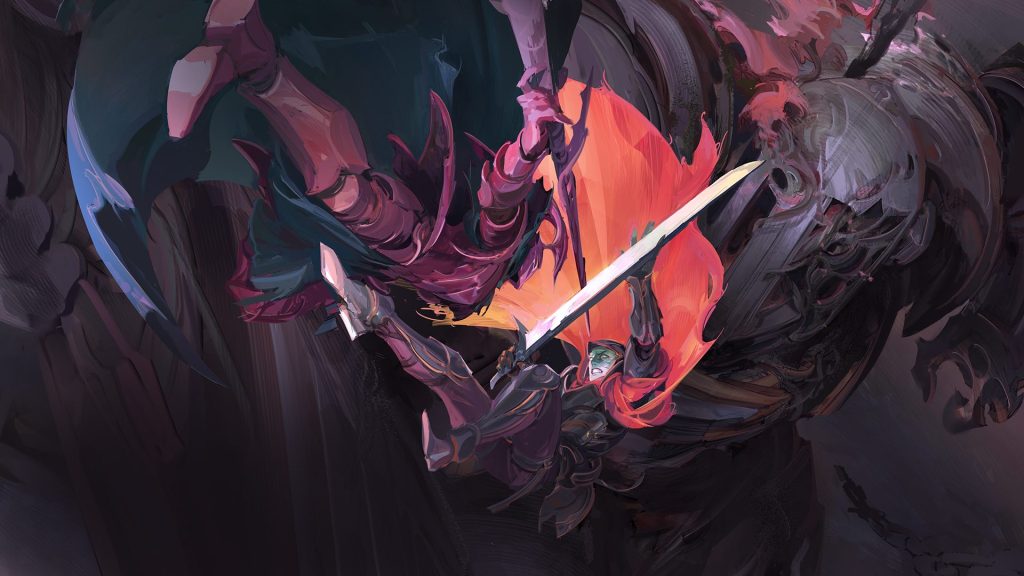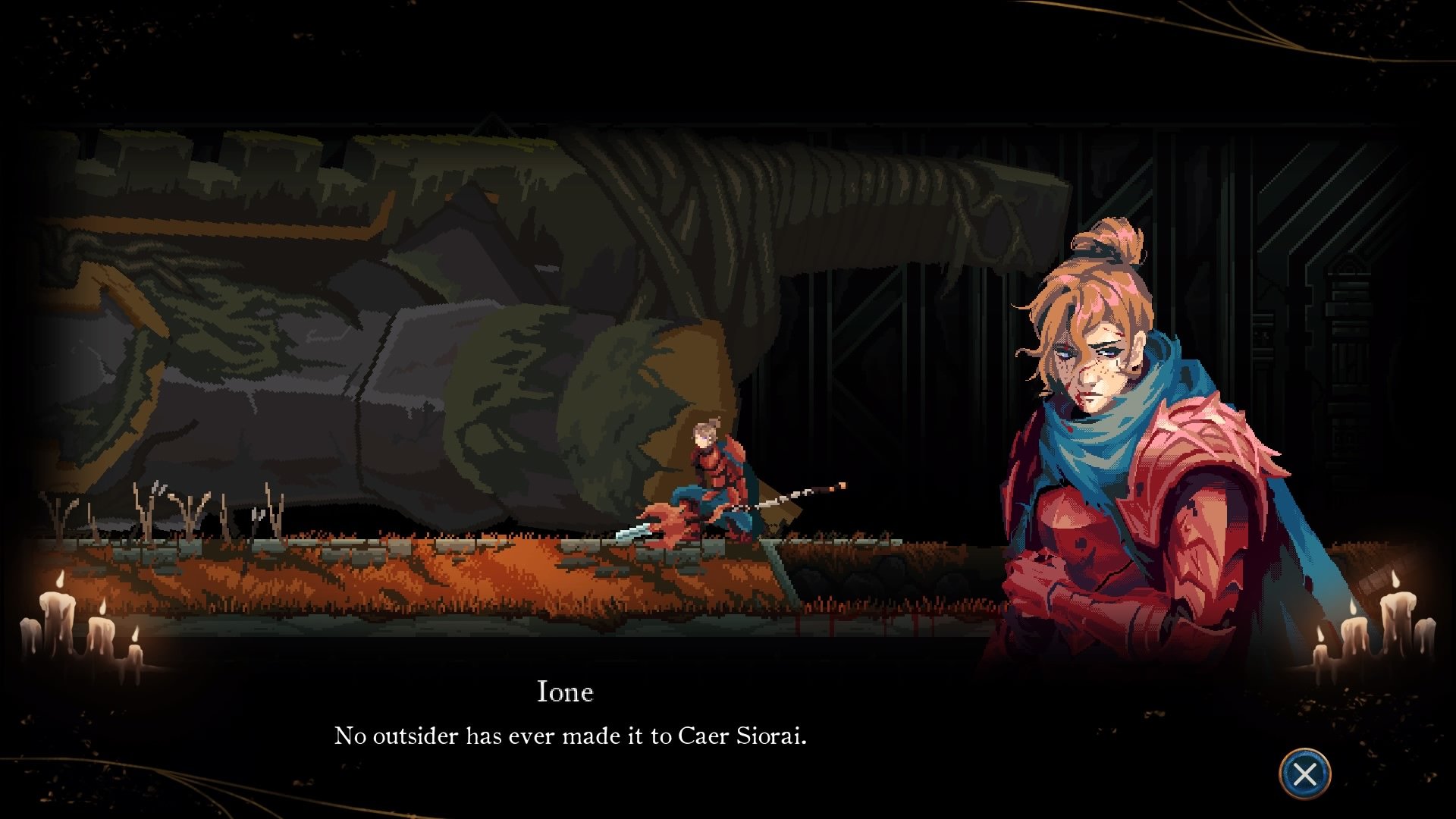
Death’s Gambit is a tale of two games. On one hand, it is a Dark Souls clone that wants to rewrite the mechanical language of that entire subgenre. On the other hand, it is a bug-ridden, meandering example of how poor technical execution can ruin a good thing.
Deadly Narrative
The story of Soren, an ill-fated knight who dies in an attempt to siege the kingdom of Siradon, is a curious one. The conspicuousness of the plot, and the roles of all of its characters, is out of the ordinary for Souls-likes. You don’t have to rustle through item descriptions or small tidbits of vague environmental ornaments to figure it out. The sleuthing can be rewarding, but I appreciated the straightforward approach here. Especially because the story, in this case, is pretty good.
Soren’s death is only the beginning, of course. Death personified comes to his aid, granting him immortality in exchange for his services: infiltrate the city and destroy the device that’s turning people into unkillable monsters. This presents an interesting discussion about the merits and downsides of living forever. Can you ever reach your potential without the impending promise of death? Does being around forever help your secure your legacy? It was more than I expected to get from a game like this. It was a welcome surprise.
For the brief time you interact with many of the characters, they are all well-formed and believable. The writing is clever and effective, presenting many of your NPCs as more than just places to buy skills or items. Death itself is especially compelling. Every time he talks, he does so with such a charismatic, yet annoyed tone. He peppers you with anecdotes and directions like a fickle cat pawing at a toy.
The narrative does a good job explaining away why you keep dying and returning. Almost everything you encounter in the city has been made immortal, and the game doesn’t let you forget it. Bosses you die against will lob insults at you upon your return, chiding you about how you failed previously. When you finally slay them, they remain to be challenged again at harder difficulties. The flavorful flair of these light touch interactions with these major threats is very cool, in practice.
Rearranging Souls
Death’s Gambit goes out of its way to subvert everything we know about the “live, die, repeat” formula of a Dark Souls-style game. Resting at an altar to Death allows you to restore your life and healing items, as well as resetting enemies. Sometimes, these altars will be traps with the statue coming to life and attacking you. Upon death, these altars serve as checkpoints to respawn to. Occasionally, death will bring you other places, like Soren’s childhood home or an island surrounded by an ocean of blood. These jarring images really nail home the madness of the world you’re fighting through. Dying gets even more twisted when these visions turn into actual explorable areas. I greatly enjoyed the way Death’s Gambit used this simple mechanic in a way to keep you off balance.
The rechargeable healing item is another trademark that is adjusted in an attempt to spice of the formula. Called Phoenix Feathers, they do more than just heal you up. You can collect different types of feathers that heal for different amounts or add other effects on top of health recovery. Some heal in a shorter amount of time, some add damage resistance. To use it as another way to add a light tactical layer to the combat is inspired, even if the execution isn’t perfect. Very few feathers have added effects that aren’t just healing for different amounts, at different speeds. It’s a missed opportunity that discourages engaging with the system to its fullest.

Upon death, you drop a feathers at the point you were slain, meaning you respawn with one less. You’ll leave one behind every time you die, even if you didn’t recover the ones before it. This hinders your healing potential, but it isn’t the progress-killer that leaving your currency behind in Souls games can be. Instead, your shards—rewards for slaying monsters—remains intact. You’re free spend them on upgrading your stats if your feathers are out in the wind. You can also just spend them on recovering all of your lost feathers at once, if tracking them down seems too difficult or tedious a task.
I saw this as forgiving interpretation of the system, as it didn’t give me that same sort of anxiety the losing a fortune in souls at a dangerous place did. As the game progressed, I didn’t even miss the lost feathers. If it wasn’t on my way, I’d make no attempt to grab them, knowing that I’d eventually just reclaim them all with shards. That doesn’t seem to be what the system intended. That goes doubly for the augment feather system, where you can sacrifice feathers to increase your overall damage. When it came time to grind away at bosses, I often would toss away at least half of my stash to make me stronger. The benefit of healing was often out weighed by the want to do at 50% more damage with every strike.
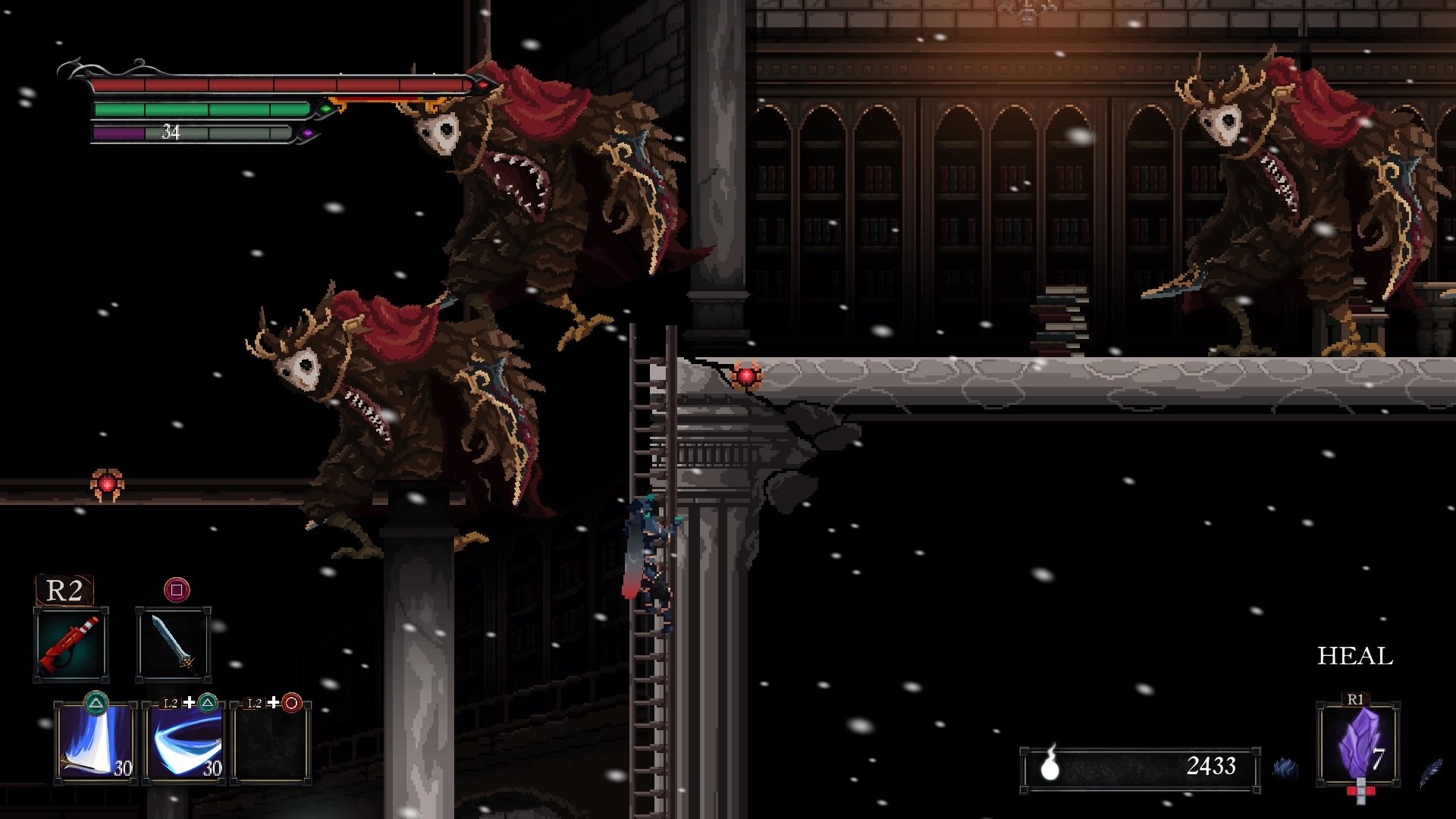
Desperate Combat
Combat hits just as much as it misses. Soren can be one of seven classes, each of which having a big effect on how he slays his foes or generally progresses through the world. Blocking, countering, dodge rolling, etc. are big parts of the combat in Death’s Gambit, and every action costs a chunk of stamina. That stamina cost can feel unnecessarily high, though. After just a minor flurry, you’ll be left tip toeing away from danger hoping nothing smashes you to bits in this vulnerable state. It also reduces combat to one swing, hit-and-run exchanges, since you don’t want to be left without the ability to roll away from or guard a big attack. This only encourages spending feathers on damage more.
The 2D landscape gives you limited combat options that aren’t spamming your weapon’s basic combo, and rolling out of danger. Death’s Gambit solves this by giving you big, weapon-based special abilities. These big damage moves are satisfying tactically and visually, and can really give you the edge over groups of foes. They have a resource problem, as well. Soul Energy acts like mana in any RPG, and when you have the right amount of it, you can cast an ability. Attacking charges this bar, but it does so inconsistently. The bar drains when you’re being passive, so keeping your soul energy charged feels like a panicky chore. Each class has a unique way of charging bonus energy, but outside of them, abilities always feel like a luxury.
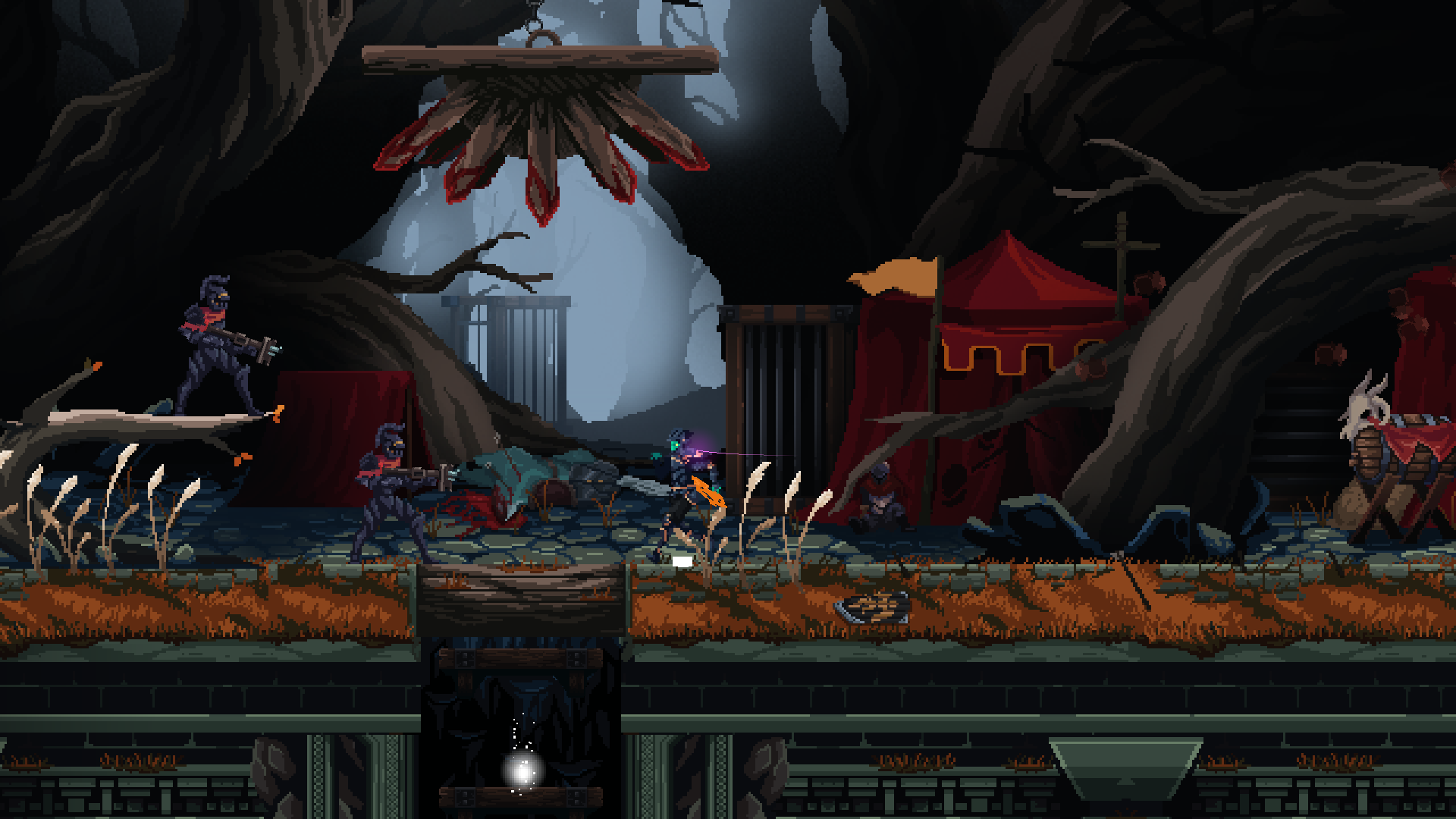
The physical act of combat suffers depending on what you’re facing. Enemies have sometimes inconsistent HUDs, with some showing you their stamina, and others just leaving you to assume. Bigger enemies can be cheese by just moving back and forth on top of their sprite, causing them to miss their own attacks. On the flip side, some enemy attacks have wildly unpredictable hit boxes. Many boss deaths will come from assuming a big attack will hit you one way, when it will actually do so from some other, awkward angle. It’s also an incredibly buggy game, with frame rates that never stay consistent for long and monsters maneuvering themselves into positions they shouldn’t be in. The game crashed more than once, ignoring some auto-saves and shunting me back before some hard-fought boss fights that I absolutely didn’t want to try again.
A Good (and Bad) Look
There is a duality to the art direction’s efficacy. The background are is beautiful, using just the right hues and shapes to portray towering cathedrals or warped swamps. Many of the NPCs have detailed and evocative sprites that really pop on screen. That extends to some of the portrait art of these characters, seen while they’re speaking. The best of them are truly incredible, and they could stand beside some of the best pixel art among all games.
The animations, however, are inconsistent. There’s a paper doll aspect to Soren (and especially his horse) that is less interpretive art and more just goofy. Bigger monster sprites lumber with a strange marionette swagger that makes it hard to take super seriously. Some of the animations are great, but when they let you down, they are jarringly subpar.
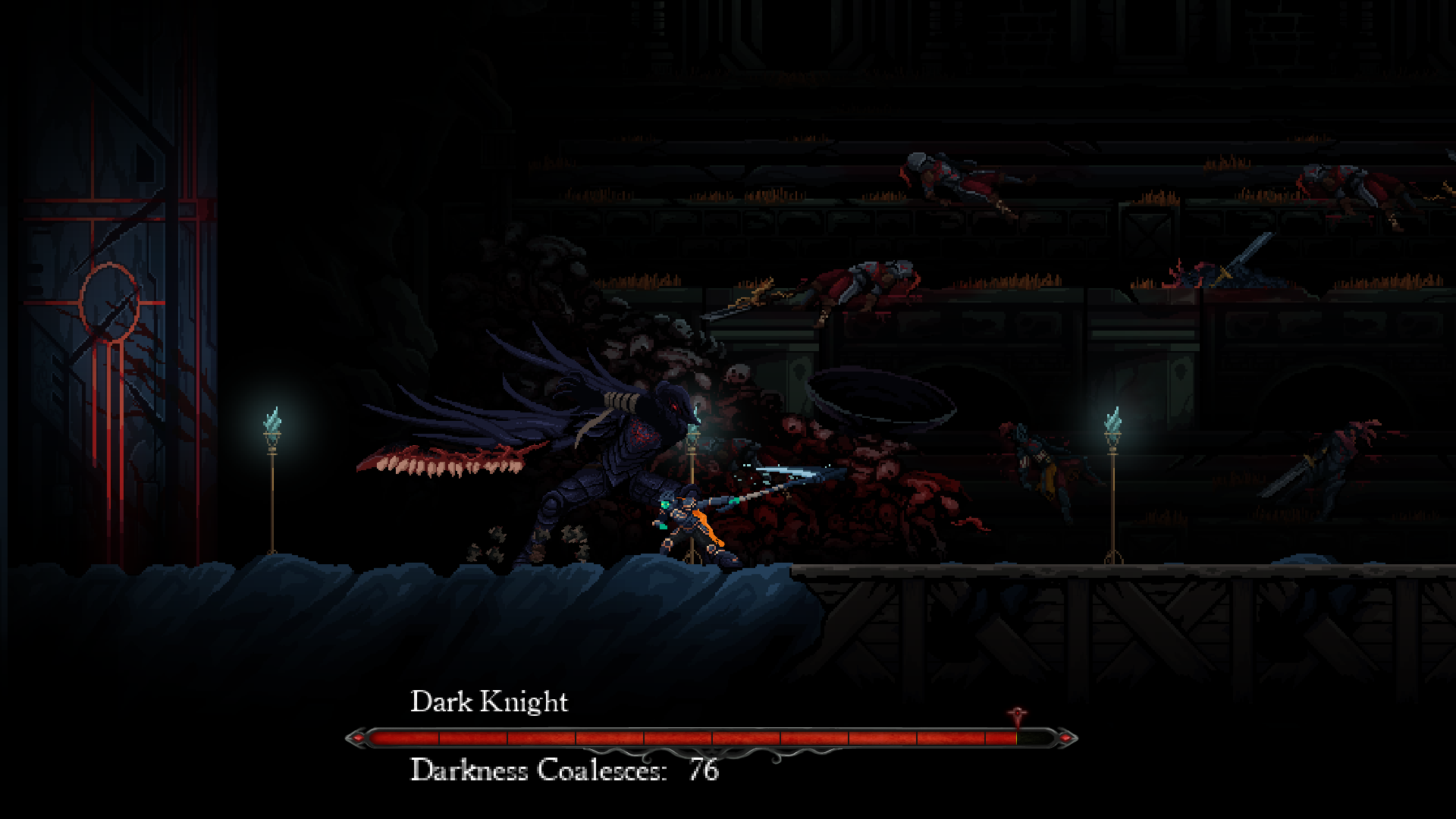
There is no location or world map, which is one of Death’s Gambit’s biggest sins. The zones are small for a game of this style, but there are so many twists and turns and hidden paths and secrets to find that you can easily get lost. It can be hard to remember where a room was that you wanted to investigate later, and traveling back to it by foot can be a boring chore. For a game that wants you to explore all of its nooks, it doesn’t make it easy.
Death’s Gambit had such promise. At its core, it is the blueprint to properly take risks and make attempts to improve a game design that we all take for granted. But it’s just surrounded with poor quality of life choices, while missing some things it should have absolutely nailed. Weird animations, strange pacing, counter-intuitive combat, and way too many bugs holds this game back from being something truly great.
Death’s Gambit review code provided by publisher. Version 1.00 reviewed on a PlayStation 4. For more information on scoring please see our Review Policy here.
-
The story is compelling and well-told
-
Some adjustments to the Souls formula are inspired
-
The art can be truly breathtaking
-
Animations are inconsistent
-
Very buggy
-
Certain liberties taken with the Souls formula fall flat
